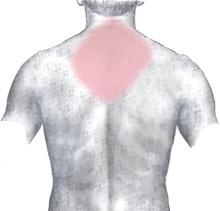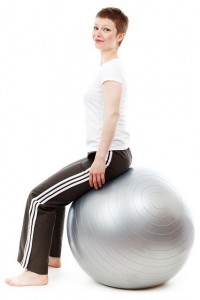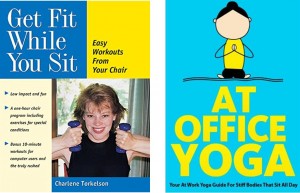 Whether you are reading, researching, taking notes, or writing, your neck and shoulders are likely to get stuck at an angle which will make you tight, stiff, and eventually sore.
Whether you are reading, researching, taking notes, or writing, your neck and shoulders are likely to get stuck at an angle which will make you tight, stiff, and eventually sore.
Your head weighs about ten lbs. When you tilt your head forward, it will cause your neck and muscles to have to work as hard as if your head weighed 30 lbs., according to Erik Dalton who founded the Freedom From Pain Institute. And if your neck is bent forward and your head is above your knees in a sitting position, that forward head posture would give you a 42 lb head. As Dalton points out, this position will also reduce lung capacity by as much as 30%.
If you hold a ten pound bag of potatoes in your arms close to your body, it will feel heavy after a while, but it’s not going to be an impossible task for most people. Try holding that same bag of potatoes with your arms outstretched in front of your body for a few minutes and it will start to feel much heavier pretty quickly.
Your neck muscles are strong, but they are not as big as the ones in your arms. They attach to the head in a number of places, coordinating their strength to keep your head as upright as possible. They aren’t lazy, but they’d rather not be constantly stressed.
 If you are a writer, you ask your neck and shoulder muscles to sustain your head for extended periods of time. Make sure your computer and/or desk are at a comfortable levels so that you can sit fairly straight up while working.
If you are a writer, you ask your neck and shoulder muscles to sustain your head for extended periods of time. Make sure your computer and/or desk are at a comfortable levels so that you can sit fairly straight up while working.
Next, notice the amount of time you keep your head bent forward. It is better to move a little every few minutes, and take a brief break every hour. Every time you “take a break,” your muscles get to breathe, which helps them work longer without lasting pain. (In relaxing between moments of tension, blood is more easily circulated, flushing out overworked muscle cells with fresh nutrients.)
Here are some specific ideas for short breaks
- Every once in a while, lift up your head into an upright position. Imagine there is a string pulling the top of your head up to the ceiling, stretching your neck upwards (don’t lift your chin or look upwards.) Take a deep breath and exhale slowly. Then lean your head to each side slowly, as if there were a balloon between your shoulder and your ear, breathing regularly. Finally, breathe in, bring your shoulders up into a shrug and drop them as you breathe out. It will take less than a minute for this set of movements.
 Try using a big sitting ball filled with air instead of a chair when you are working. This kind of sitting is much better for your spine, neck, back and hips than sitting frozen in place on an immobile chair. Your feet on the ground will balance you while you are on the ball, and the tiny adjustments you make quickly become automatic.
Try using a big sitting ball filled with air instead of a chair when you are working. This kind of sitting is much better for your spine, neck, back and hips than sitting frozen in place on an immobile chair. Your feet on the ground will balance you while you are on the ball, and the tiny adjustments you make quickly become automatic.- There are air-filled cushions that work well too, placed on top of a chair (or car) seat which allow you to move without demanding much conscious attention.
- Drink a big glass of water every couple of hours. This will likely mean you’ll need to relieve your bladder more frequently, which means you’ll get up and walk to the bathroom more often.
Here are some specific ideas for longer breaks (once 2-3 hours if possible)
- Go for a walk. There is good evidence that walking refreshes the brain
- Put on some dancing music you like and dance to it for 10 minutes (or longer, of course!). In Ithaca, NY, we used to have “Zobo dancing” to describe free-form dancing to music (specifically the Zobo Funn Band). I also remember Richard Simmons, with his brilliant Dancing to the Oldies. Zumba dancing might give you some specific ideas for movements, but is a little too extreme for just relaxing your body. The idea is to move your body, especially your neck and shoulders in a way that releases tension. So whatever music makes you want to do that, it’s the one for you!
And finally, here are a couple other ideas:
- There are some good workouts and yoga stretches for the neck and shoulders that can be done at a desk. Check out the books, Get Fit While You Sit, by Charlene Torkelson, or At Office Yoga, by Julie Schoen
- You can massage your own shoulders and neck! Grasp the top of your shoulders or your neck with the palm of your hand and squeeze a few times. Use an open palm or gentle fist to pound the top of your shoulders. There are dozens of videos about neck and shoulder self-massage on YouTube, and here is one example: Self Massage for Neck Pain


Thank you for the great advice. I am using it as I type:
Thank you, Therese!
And thanks for sharing it on Facebook. May your neck and shoulders than you.